Perrotin
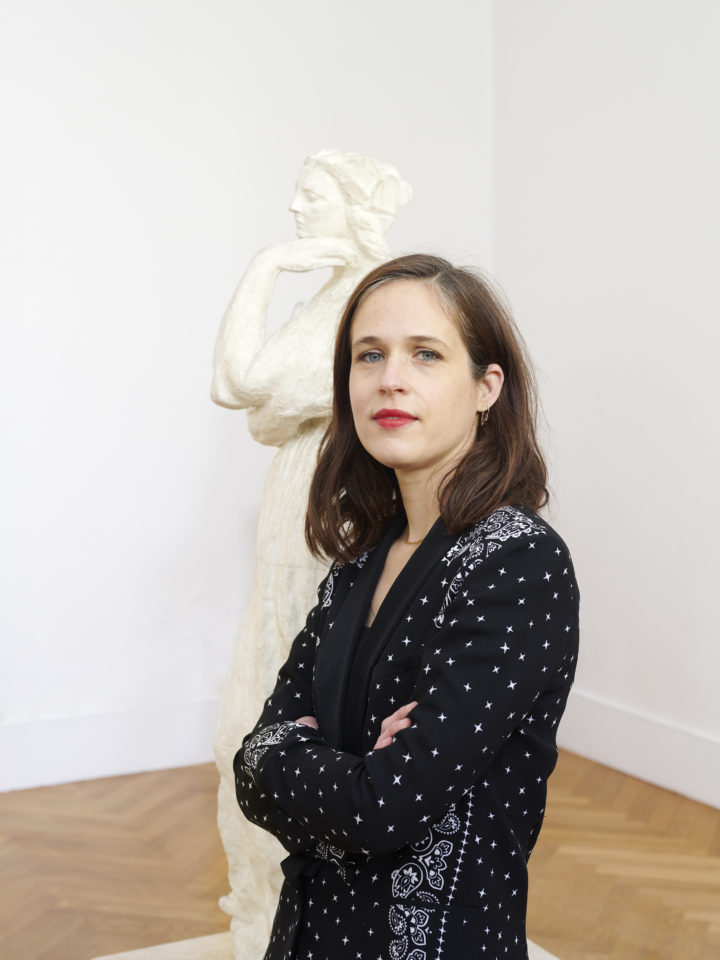
Ophelie Ferlier-Bouat - Credit : © Photo: Pierre Antoine
Ophélie Ferlier-Bouat offers her perspective on Klara Kristalova’s exhibition at galerie Perrotin.
Exhibition “Beast” from April 13th to June 1st, 2024.
Ophélie Ferlier-Bouat, the director of the Bourdelle Museum in Paris, is a chief heritage curator. Prior to this role, she served as the sculpture curator at the Musée d’Orsay from 2012 to 2021. She has curated numerous exhibitions related to 19th and 20th-century art, including “Gauguin the Alchemist” at the Grand Palais (2017), “Léopold Chauveau” (2020), and “Aristide Maillol” at the Musée d’Orsay (2022), as well as “Rodin/Bourdelle” at the Bourdelle Museum (2024). She regularly teaches at the École du Louvre.
“I am a sculpting draughtsman and painter,” born in 1967, Klara Kristalova refuses to be confined to the categories she enjoys defying. Far from taking a conventional approach, she allows the unexpected and the uniquene to emerge through her art by blurring the boundaries between different techniques and artforms, venturing out to explore what is undefined. Her artistic journey saw her move away from pure painting in the mid-1990s to sculpture. She approaches this discipline with great freedom and playfulness, appreciating both the shaping and materiality it offers.
Kristalova’s ceramics undergo successive transformations. A quick drawing is soon followed by modeling, which evolves the artist’s initial intention. Through kneading, she reconnects with an ancestral practice. She manipulates the clay directly with her fingers, a source of irregularity, as the surface is ever-shifting. After an initial firing, she paints the ceramic in a rapid playful way. Then comes the moment of painting on the ceramic in a rapid and playful manner… Finally it is the moment of ultimate transformation: the final firing and its unforeseen outcomes. Kristalova incorporates a sense of imperfection, emergence, and a touch of chance into her creative process: upon opening the kiln, she particularly enjoys when colors have fused and merged. She appreciates when colours reappear in unexpected places, blurring the oftentimes stark contrast between the purity of white hues and darker cold-tone colours.
Amidst this ceramic collection, a few robust bronzes temper the vulnerability of the clay.
Beast – Monstre
“Monstre” invites the spectator to dive into Kristalova’s enigmatic universe. The lines between reality and fiction are blurred: human or animal heads and masks coexist with hybrid beings, in unusual distortions of scale. Kristalova creates a fantastical world where anxiety coexists with humor. This is evident, for example, in the gigantic insect of the work “The fly’s kiss” an animal whose flower-shaped trunk delicately touches the lips of the child. An unexpected moment of tenderness arises from this supernatural kiss.
Kristalova blurs the boundaries between nature and humanity. Fascinated by the connection between humans, animals, and plants, she combines them at will, which creates a playful and, at times, unsettling effect. Humankind in its nature is omnipresent: humanity emerges in the depictions of nature and plants, as the artist incorporates human faces. Consciously or unconsciously we ask ourselves: are Kristalova’s beings humanoid animals or vegetalized human-beings? Probably neither one nor the other: the hybrid being occupies an in-between, liminal space, surpassing the categories created by humankind, in its attempt to classify, confine and control
The undefined nature of these hybrid beings places them in a fantastic universe full of symbolism: when encountering “All my thoughts” or the flower-faces, the viewer might think of Odilon Redon’s “L’Araignée souriante” – “The Smiling Spider.” These beings become “phantasms,” apparitions etymologically speaking. Are we projected into another reality or do we find ourselves in the world of dreams, or even nightmares, similar to the universes created by Munch or Goya?
The non-conformity of Kristalova’s creatures and their humanoid elements makes us label them as “monsters.” As such, they embody otherness, uniqueness. The monster is different, as it externalises and transposes raw emotions such as fears, frustrations, rage, panic, however it can also be seen as representing a sense of release, or freedom. This also alludes to Gauguin’s ceramic monsters.
Waverings – Vacillements
Kristalova’s hybrid beings test the gaze one casts on the other. The artist highlights the complex relationship of our society with monstrosity, with those that deviate from the norm. What place is there for difference, when our society dictates an extremely rigid standard of beauty? Hybrid beings disrupt the definition of what is human and challenges the limitations of the physical body. The transformations undergone by these imaginary bodies, at times carry a sense of latent violence. Tree branches and roots sprouting from bodies signify both power, and potential imprisonments. This is the case for the astonishing piece “Bûche” – “Log”, where a young girl is imprisoned in a trunk. An artwork that could allude to piece of wood held like an infant by the enigmatic “Log Lady” in David Lynch’s universe.
The fusing of vegetation with bodies also refers to the mutation of adolescent bodies, carrying a sense of vitality. The youth is characterised by power and fragility, play and seriousness, adolescents are full of questions, contradictions and doubts. Anxiety goes alongside carelessness, grandeur is held back by fragility. This can be seen in “Souris”. Still, adolescence is the age of all possibilities, before our gender and being perceived according to it, determines how the world sees and treats us, before we are separated into binaries. The feeling of nostalgia, of longing for the time that precedes such judgments is omnipresent.
The in-betweenness of physical bodies and appearances also refers to a moment in time, the narrative flow seems interrupted, without a thread to hold onto. The viewer questions both the nature of these beings and their inter-dependent relationships: why does the woman-head in “All my thoughts” stand apart? In “Larger than life,” a smiling young girl is mounted on endless stick legs, and seems to move slowly and benevolently among the others, like a carnival monster on stilts. This creates a moment out of time in which societal norms and conventions are overturned. Themes of nonconformism, freedom, distance and amuseuemt are always present in Kristalova’s art. For example in “Reclining Bird” a bird is lounging in the chade of flower-heads while wearing high heels. In “Ordinary day”, rabbits taunt a discontented wolf from the top of a tree.
There is no Manichaeism or dualistic cosmology in this suspended world of possibilities. The tipping point is never certain, even in a growing climate of angst. Is the humanoid mouse in “Souris” merely shy, surrounded by the beings around her, or does the mouse threaten its surroundings? The young man in mouse form reflects the complexity within each individual, capable of turning towards the dark side. Equally vulnerable and powerful, the mouse signifies the threat that humankind poses to the earth. The use of this symbolic creature by the artist is imbued with a cathartic value, in the Aristotelian sense of the term: purifying us of our passions. The work thus possesses an almost magical, prophylactic value.
Deeply worried about the rise of extremes and humankind’s inclination towards destruction, Kristalova constructs a world that reveals the fragility of life and the complexity of the relationships forged between beings. The viewer is invited to question their own perception, which is ever-changing, depending on one’s psychology and state of mind. “My art is about language, communication,” asserts Kristalova. This imaginary dialogue allows each individual to project their own feelings and concerns … A true relationship that engages the viewer and projects them into the space of the artwork: art as experience, to paraphrase John Dewey.

Glazed stoneware / Grès émaillé
125 x 35 x 35 cm | 49 3/16 x 13 3/4 x 13 3/4 inch
Photo: Carl Henrik Tillberg
©Klara Kristalova/ ADAGP, Paris 2024 Courtesy of the artist and Perrotin.
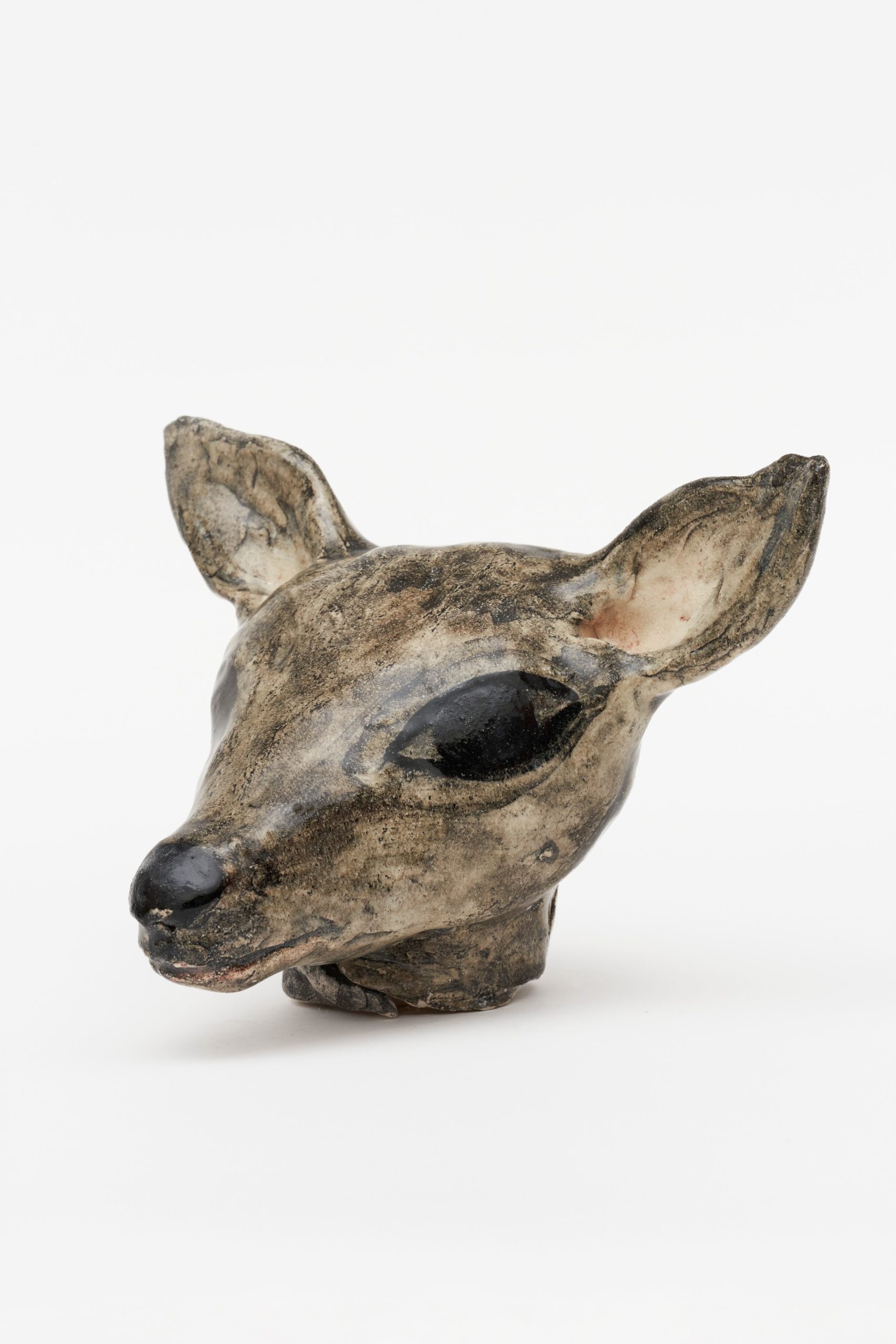
Glazed stoneware / Grès émaillé
17 x 22 x 15 cm | 6 11/16 x 8 11/16 x 5 7/8 inch
Photo: Carl Henrik Tillberg
©Klara Kristalova/ ADAGP, Paris 2024
Courtesy of the artist and Perrotin.
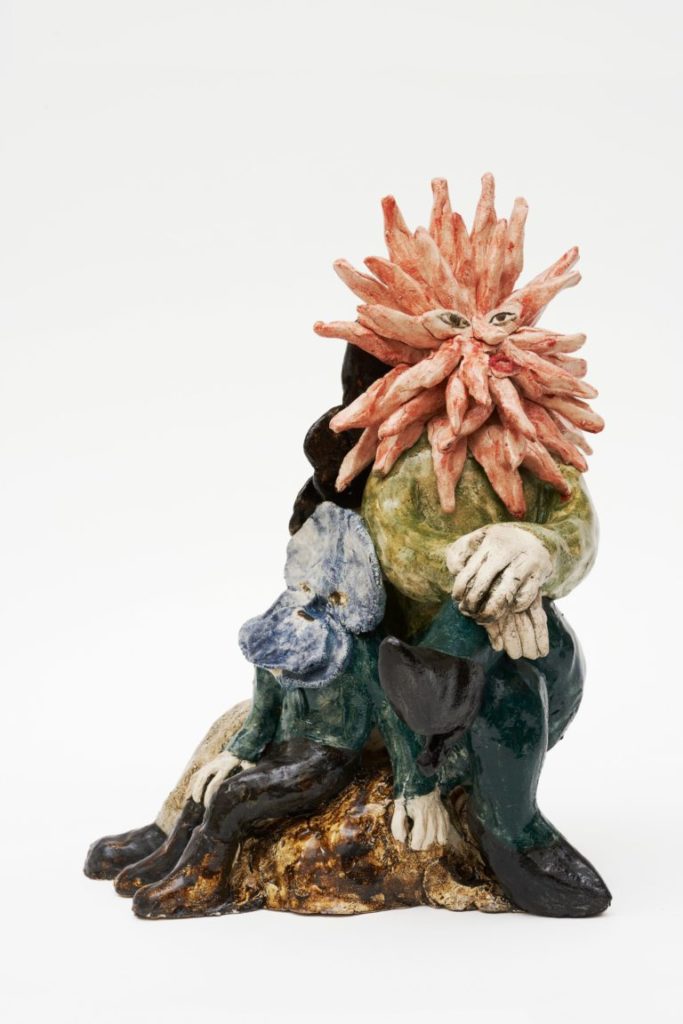
Glazed stoneware / Grès émaillé
125 x 35 x 35 cm | 49 3/16 x 13 3/4 x 13 3/4 inch
Photo: Carl Henrik Tillberg
©Klara Kristalova/ ADAGP, Paris 2024 Courtesy of the artist and Perrotin.
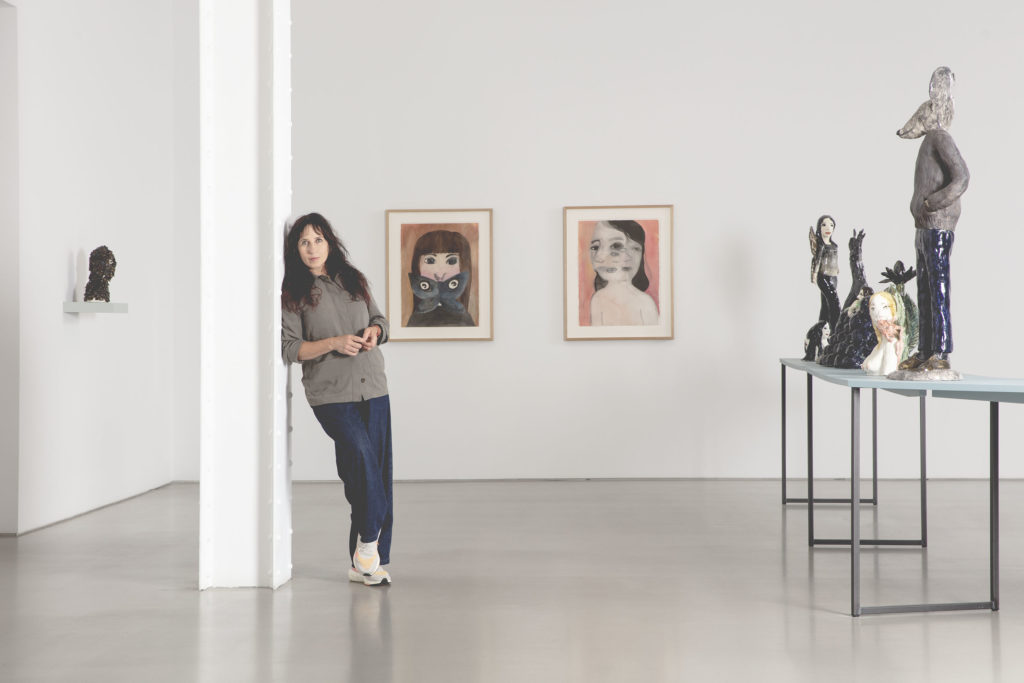
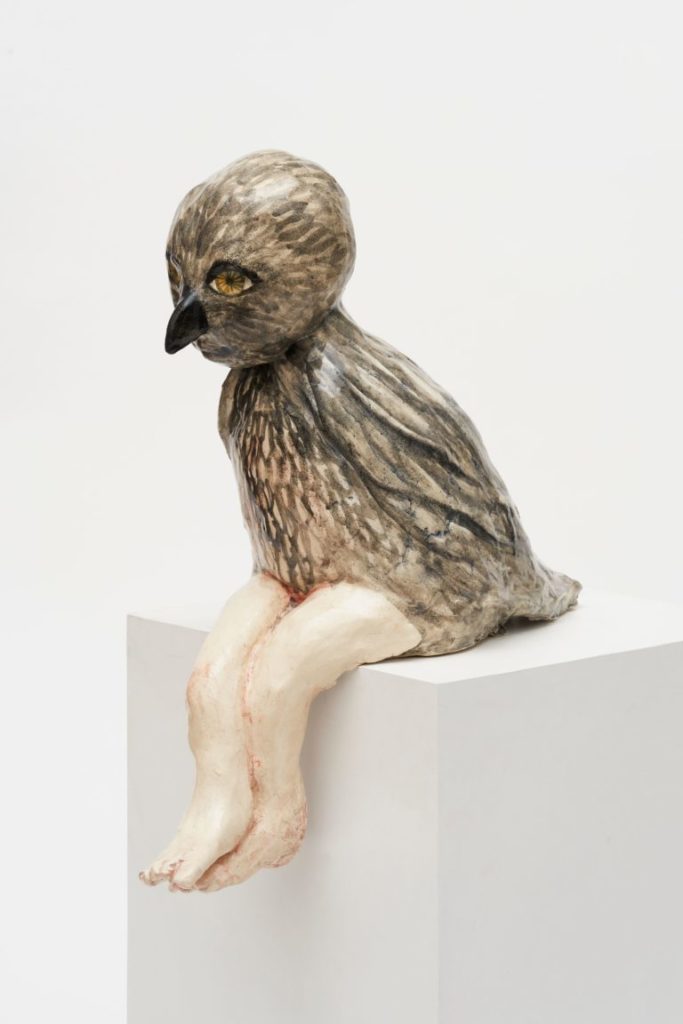
Glazed stoneware / Grès émaillé
58 x 22 x 52 cm | 22 13/16 x 8 11/16 x 20 1/2 inch
Photo: Carl Henrik Tillberg
©Klara Kristalova/ ADAGP, Paris 2024
Courtesy of the artist and Perrotin.
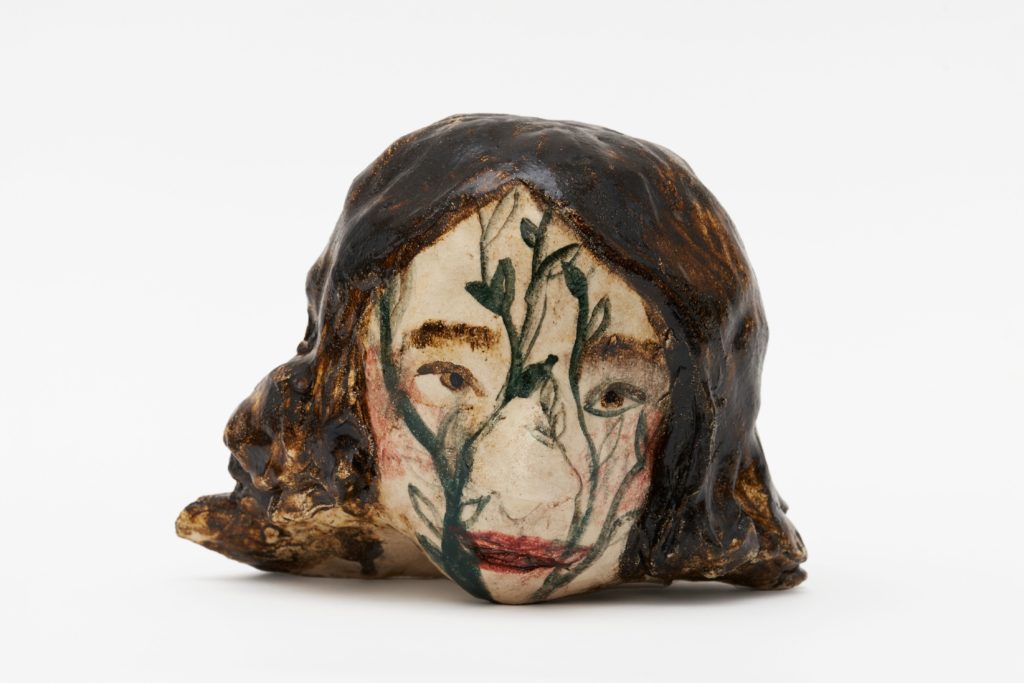
Glazed stoneware / Grès émaillé
16 x 20 x 17 cm | 6 5/16 x 7 7/8 x 6 11/16 inch
Photo: Carl Henrik Tillberg
©Klara Kristalova/ ADAGP, Paris 2024
Courtesy of the artist and Perrotin.